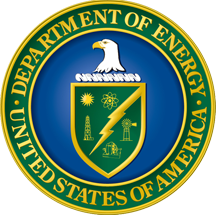A Theoretical and Experimental Investigation of Unidirectional Freezing of Nanoparticle-Enhanced Phase Change Materials
Journal Name: Journal of Heat Transfer, Transactions of the ASME
Volume: 134
Issue: 9
Page: 092301
Year: 2012
List of Authors:
Liwu Fan, Jay M. Khodadadi
Abstract
Highly-conductive nanostructures may be dispersed into phase change materials (PCM) to improve their effective thermal conductivity, thus leading to colloidal systems that are
referred to as nanostructure-enhanced PCM (NePCM). Results of a theoretical and
experimental investigation on freezing of NePCM in comparison to the base PCM are presented. A one-dimensional Stefan model was developed to study the unidirectional freezing of NePCM in a finite slab. Only the thermal energy equation was considered and the presence of static dispersed nanoparticles was modeled using effective media relations. A combination of analytical and integral methods was used to solve this moving
boundary problem. The elapsed time to form a given thickness of frozen layer was therefore
predicted numerically. A cooled-from-bottom unidirectional freezing experimental
setup was designed, constructed, and tested. Thermocouple readings were recorded at
several equally spaced locations along the freezing direction in order to monitor the progress of the freezing front. As an example, cyclohexane (C6H12) and copper oxide (CuO)
nanoparticles were chosen to prepare the NePCM samples. The effective thermophysical
and transport properties of these samples for various particle loadings (0.5/3.8, 1/7.5,
and 2/14.7 vol. %/wt. %) were determined using the mixture and Maxwell models. Due to
utilization of the Maxwell model for thermal conductivity of both phases, the numerical
predictions showed that the freezing time is shortened linearly with increasing particle
loading, whereas non monotonic expediting was observed experimentally. The maximum expediting was found to be nearly 8.23% for the 0.5 vol. % sample. In the absence of a nanoparticle transport model, the mismatch of the cold plate boundary conditions, lack of accurate thermophysical properties, especially in the solid phase of NePCM samples and precipitation issues with 2 vol. % samples were addressed by improving the experimental setup. Through adopting a copper cold plate, utilizing measured thermal conductivity data for both phases and using 1, 2, and 4 wt. % samples, good agreement between the experimental and numerical results were realized. Specifically, adoption of measured
thermal conductivity values for the solid phase in the Stefan model that were originally
underestimated proved to be a major cause of harmony between the experiments and
predictions.
